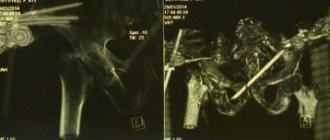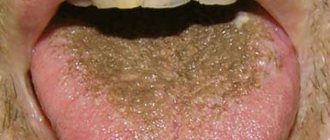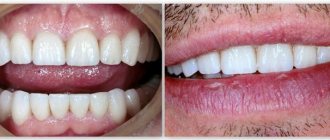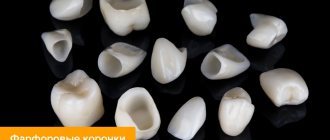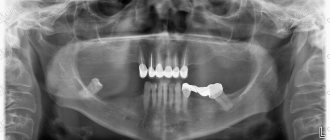– substances of natural or semi-synthetic origin that inhibit the growth of microorganisms or cause their death.
Antibiotics only affect microorganisms. Their effect does not apply to viruses or fungi. Therefore, it is advisable to use antibiotics for diseases caused by microbes. In case of viral diseases (hepatitis, influenza, etc.), their use makes no sense and can even cause harm due to side effects.
Depending on the chemical structure, antibiotics are divided into groups , for example, fluoroquinolones, penicillins, tetracyclines, macrolides, cephalosporins, etc.
Each group may contain antibiotics of different generations (for example, in the fluoroquinolone group, ciprofloxacin belongs to the first generation, levofloxacin to the second, and moxifloxacin to the third).
Basic principles of antibacterial therapy
There are certain requirements for prescribing antibiotics.
The antibiotic prescribed by the doctor must penetrate well into the tissues where there is a purulent-inflammatory process. For example, lincomycin penetrates well into bone tissue and is used for osteomyelitis, amoxiclav - into soft tissues, and can be used in the treatment of boils and erysipelas.
The antibiotic must have an inhibitory effect on the microorganism that caused the inflammation. For example, it makes no sense to use Tsifran for anaerobic infections (caused by anaerobic microorganisms), because Tsifran has no effect on them. In such a situation, Avelox is indicated - an antibiotic that acts incl. and anaerobic microorganisms.
To determine the sensitivity of the microorganism to antibiotics, a culture is taken from the wound. The difficulty is that the doctor usually receives the culture result in about 5–8 days, and an antibiotic must be prescribed immediately upon detection of microbial inflammation. In such a situation, empirical antibiotic therapy is used, the meaning of which is to prescribe an antibiotic that suppresses the most likely causative agent of the infection. For example, for a boil or carbuncle, antibiotics are prescribed that suppress Staphylococcus aureus, because It is this microorganism that most often causes suppuration in boils and carbuncles. Then, when the culture result comes, you can change the antibiotic to the one to which the microbe is sensitive in this particular case (if this is still necessary).
Antibiotics should be used to minimize the risk of side effects and complications in a given patient. For example, fluoroquinolones should not be prescribed to patients with epilepsy; aminoglycosides are not suitable for patients with hearing loss.
Don't repeat at home
An antibiotic is a powerful medicine and should always be prescribed by a doctor. For more than two decades, many pharmacies, in an effort to increase revenue, freely sold prescription drugs, except for narcotic and psychotropic drugs. This led to the fact that many doctors forgot how to fill out prescription forms, writing prescriptions on pieces of paper without even stamping them. And patients bought antibacterial, also known as antimicrobial, drugs for self-medication. Control has only tightened in the last two years.
“Even before I started working at the Fantasy Children’s Clinic,” says pediatrician Victoria Alipova, “a child was brought to the appointment who complained of abdominal pain and bowel movements. The medical history showed that the boy had been treated with antibiotics 12 times over the past year for every cold, including ARVI, when such medications are useless. For the first time, the doctor prescribed an antibiotic, and then the child’s mother acted by analogy. It was enough to stop the drug, and the problem with the intestines would normalize. Children can take antimicrobials in the form of syrups or suspensions even from birth, but only according to indications determined by the doctor. Many doctors prescribe such medications for any reason.”
Antibiotics have many side effects. First of all, they destroy the intestinal microflora: diarrhea, vomiting, possible colitis, liver and kidney dysfunction, and allergies. In such cases, probiotics or other drugs that normalize the functions of the gastrointestinal tract are often prescribed in parallel. However, urologist Rinaz Kamaletdinov says that the clinical recommendations do not indicate that such drugs can stabilize the intestinal microflora against the background of antibacterial therapy. And in each case of illness, only a specialist can make a decision on the type of therapy:
“Treatment with antibiotics should be carried out by a doctor,” Dr. Kamaletdinov is sure. - Even if similar symptoms reappear, you should not take the pills left over from your previous illness. You can consult a doctor online or by phone. In urology, different types of antibiotics are used, most often fluoroquinolones, especially levofloxacin. It is often necessary to change the pharmacological group, dose, duration and schedule of administration. For example, a patient with bacterial prostatitis caused by Escherichia coli was given one type of antibiotic. Treatment requires 28 days, but symptoms returned in the 3rd week. It turned out that a second infection appeared in the body, and E. coli developed resistance to the drug. I had to additionally prescribe a drug of a different spectrum.”
Routes of administration of antibiotics
- oral (by mouth), intramuscular and intravenous - should also be taken into account in outpatient practice. Thus, for patients receiving treatment at home, it is not advisable to prescribe antibiotics that require three intramuscular injections (for example, cefazolin), because such a patient will have to go to the treatment room three times a day.
Only a doctor should prescribe an antibiotic , because the use of antibiotics without indications or when there are contraindications can cause side effects and complications, and ultimately cause harm rather than benefit.
Is it possible to overcome resistance?
Over time, the bacteria adapt by producing genes that protect against the effects of antibiotics. If a person becomes infected with such bacteria, it is much more difficult to treat. This process is on a planetary scale, and doctors themselves are largely to blame for the problem. They often thoughtlessly use broad-spectrum antibiotics, which, like carpet bombing, destroy the microflora of the mucous membranes.
“It’s easier to prescribe an antibiotic to a child with a high fever or an unconscious intensive care patient and not worry about further treatment,” complains therapist and medical blogger Philip Kuzmenko. “The doctor simplifies his work by shooting sparrows out of a cannon and achieves the patient’s recovery, but at too high a cost.”
The next time the same disease overtakes a recovered person, the previous medicine may not work, since the bacteria have learned to resist it. In this arms race, microbes have a clear advantage. There will always be bacteria against which even the latest generation of drugs will be powerless.
“Self-medication with antibiotics is the murder of our grandchildren and great-grandchildren,” Dr. Kuzmenko is convinced. — Every day I receive letters that inexperienced or incompetent doctors prescribe antibiotics for ARVI. The mortality rate from influenza does not exceed 2−3%, and from a bacterial infection, for which there is no cure, it reaches 50%. Personally, in the first year of practice I prescribed antibiotics often, then less often, and in the 4th-5th year - almost never. There are 3 groups of so-called antibiotics of choice or first line: penicillins, macrolides and cephalosporins. These drugs are prescribed in case of a threatening situation even before confirmation of an accurate diagnosis. It is a myth that pneumonia can be “heard out” at an early stage, but in some cases the patient may not even make it to the pharmacy. Therefore, empirically, from a variety of antibiotics, “broad-spectrum” drugs were selected that act on 20–25 species of bacteria.”
Medicines for inflammation of gums and teeth
Antibacterial drugs are effective against inflammatory processes of tooth roots and gumboils. These are purulent diseases in the subnaosteal or subgingival part. They appear in the form of purulent sacs on the gums. Incorrect and untimely treatment leads to surgical intervention.
The main reasons for the appearance:
- jaw injury;
- complication after improper treatment of pulpitis and tooth extraction;
- consequences of acute respiratory viral infections, influenza;
- mechanical damage to gingival tissue;
- advanced forms of caries;
- inflammation of gum pockets;
- hypothermia.
Fluxes come in different types: ossifying, ordinary, serous-albumic, purulent, fibrous. They are manifested by symptoms such as general weakness, fever, severe toothache radiating to the temple, swelling, pathological mobility of teeth, enlarged lymph nodes in the neck, redness in the localized area.
An antibiotic for toothache that has developed as a result of gumboil helps at the initial stage of the disease. Medicines relieve symptoms. Additionally, vitamin and mineral complexes are prescribed to strengthen the immune system.
The operation is prescribed in advanced cases. The abscess is opened under local anesthesia, cleansing is carried out, and drainage is installed to release residual purulent masses. After surgery, the patient will have to take antibacterial drugs prescribed by the dentist.
Therapeutic treatment with antibiotics has a cumulative effect, so it is important to follow the dosage and not stop taking it prematurely. The choice of means depends on the cause of inflammation, the age of the patient, the characteristics of the disease and the degree of its neglect.
You can use drugs such as Amoxiclav, Lincomycin, Azithromycin, Citrolet, Clindamycin, Trichopolum, Biseptol.
The drugs are prescribed taking into account contraindications and individual tolerance. To avoid microbial resistance of the body, use for more than 10 days is contraindicated.
In childhood, flux is rare, but leads to serious consequences due to the accelerated spread of infection in the body. At the slightest sign of suppuration, you should immediately contact a specialist. Treatment is aimed at eliminating the source of the inflammatory process and generally strengthening the body and immune system.
Medicines for prevention
Prevention with antibacterial agents is a common technique in oral surgery and dentistry. Antibiotic therapy before and after surgery reduces complications.
It is advisable to use products with high bioavailability and minimal side effects. Requirements for medications used for preventive purposes:
- increased activity against pathogenic bacteria, more often found in ondontogenic inflammatory lesions;
- correspondence of the spectrum of action to representatives of the microflora located in the oral cavity;
- good penetration into tissue, especially during operations to open phlegmon and abscess.
An antibiotic when implanted in dentistry minimizes the risk of side effects. Actively fight against foci of infections and bacteria. Selected based on weight and age. Common drugs are penicillins and cephalosporins.
The prescription of drugs depends on the complexity of the surgical intervention and possible complications. Prevention is mandatory in case of prolonged surgery or unfavorable treatment.
Dental antibiotics for periodontal disease and periodontitis
Antibacterial drugs are often used in treatment regimens for periodontal disease. Moreover, each clinical case requires a special approach. Therapy is aimed at restoring normal microbial flora. Antibiotics are prescribed in the form of tablets, injections, ointments, and gels. The medicine is selected by a periodontist taking into account the severity of damage to periodontal tissues and the results of a diagnostic examination.
It is necessary to distinguish between periodontal disease and periodontitis, despite the similarity of symptoms:
- unpleasant odor;
- soreness;
- swelling, bleeding gums;
- feeling of unpleasant taste;
- pathological mobility of teeth.
Periodontitis is a consequence of exposure to pathogenic bacteria. Whereas periodontal disease often develops against the background of a metabolic-dystrophic disorder. Other provoking factors of pathology:
- genetic predisposition;
- pathological bite;
- gum injuries due to incorrectly selected dentures and crowns;
- deposits in subgingival pockets;
- hormonal imbalance;
- gastrointestinal exacerbations;
- infectious respiratory diseases;
- abnormal attachments of the frenulum;
- diabetes.
Although there are some differences, both diseases can lead to complete tooth loss. Severe forms require long-term treatment, including antibiotic therapy. Antibiotics used in dentistry for periodontitis and for the prevention of periodontal disease are prescribed in a course (up to 10 days), in the form of tablets, injections and topically.
Proper oral hygiene and nutrition are of great importance. If there is a deficiency of macro- and microelements in the body, an effective drug is selected. Professional teeth cleaning, at least 2 times a year, and regular removal of microbial plaque with high-quality pastes will prevent the development of periodontal disease.
results
- According to the data obtained, after one year the difference in the sum of the RMDQ scores between the amoxicillin group and the placebo group was −1.6 (95% CI −3.1-0.0, P = 0.04).
- Subgroup analysis also did not reveal clinically significant differences. For patients with Modic 1 changes, the difference was −2.3 (95% CI −4.2 to −0.4, P=0.02), for patients with Modic 1 changes −0.1 (95% CI −2.7-2.6, P=0.95).
- Fifty patients (56%) in the amoxicillin group had at least one adverse event, compared with 31 patients (34%) in the placebo group.
